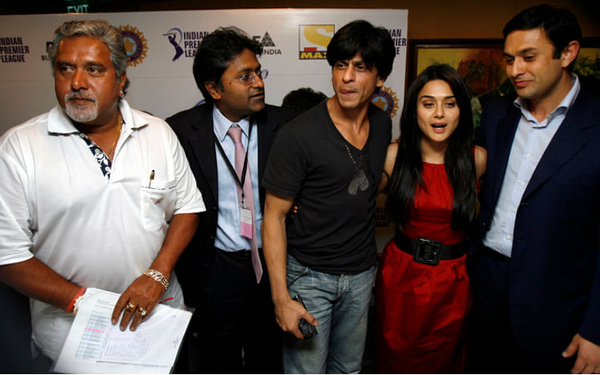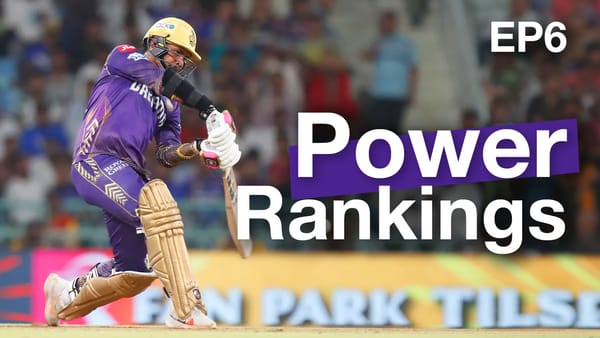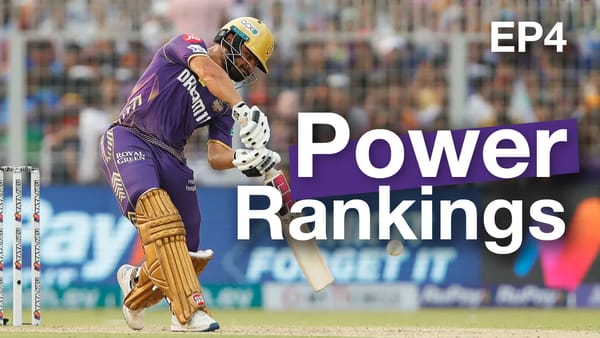How RCB beat the odds to reach the WPL final

Guest post from Tarutr Malhotra:
The Royal Challengers Bangalore should not have won their eliminator against the Mumbai Indians.
No team has ever defended a total as low as 135 runs in the Women’s Premier League. MI have only ever failed to win a single match when batting second. Even ESPNcricinfo’s win probability metric gave the defending champions an 89.28% chance of winning the match with just two overs left.

However, against all odds, in front of a peak concurrent streaming audience of 53 million people, RCB managed to pull off a last-over miracle and will face the Delhi Capitals in the final on Sunday.

But was this just luck, or did RCB discover a winning strategy?
RCB’s middle order bails out the openers…again.
Despite Smriti Mandhana’s brilliance in the tournament's first half, RCB’s openers have struggled to impact the game. This problem has only become worse in the last four matches, as the openers have averaged only 26.50 runs at a combined strike rate of 103.92.
In essence, the openers have been putting RCB in trouble during the powerplays with slow run rates and loads of wicket losses. Luckily for the team, batters 3 through 7 – anchored by new orange cap holder Ellyse Perry & Richa Ghosh – have been averaging 113.75 runs at a strike rate of 134.22 during the same 4-game period.

This played out again during the eliminator, as Perry’s 66-run innings saved Mandhana’s blushes after both her & Sophie Devine were back in the pavilion at 20-2 with just 2.2 overs gone. Chopping and changing the batting order has not worked either, as Mandhana has opened the innings with three different partners in the last four matches.
Perry, Ghosh & the pinch-hitting Georgia Wareham (who has the third-highest strike rate in the tournament at 163.23) are propping up the batting order, but RCB’s openers need to find a way to contribute at the top of the order.
Perry’s resurgence clarifies RCB’s bowling unit
RCB have a problem of plenty when it comes to bowlers. They regularly bowl at least seven different bowlers in an innings – by far the highest in the WPL. This has led to some instability among the bowlers, as the constant chopping and changing has meant RCB’s bowlers very rarely complete their 4-over allotments.
A major pain point has been who to bowl first. Conventional wisdom says you need at least one pacer in the powerplay overs, but both Renuka Singh & Sophie Devine have been struggling for form this season.

However, Ellyse Perry’s increasing workload, and her astonishing 6/15 spell against Mumbai in the last group stage match, means that she has gone from maybe 1-over-a-game to a guaranteed 4-over spell anytime RCB need to reign in the opposing batters. It’s not ideal, but Perry is holding up RCB’s pace attack on her own for now.
As we saw in the eliminator game, Mandhana was able to ditch her Plan A of Renuka Singh & Sophie Devine fairly quickly because RCB were stocked with other reliable bowling options. In fact, despite playing seven different bowlers, Mandhana actually had another option waiting in pacer Shradda Pokharkar, if needed.
The reason why she wasn’t needed is because RCB’s spinners – and particularly 21-year-old Shreyanka Patil – have started to impose their will on the game.

Against the Mumbai Indians, Patil & Molineux both walked away with 4-over spells and economy rates of 4.00/over, while Georgia Wareham’s more expensive overs can be forgiven since she got the important wicket of Nat Sciver-Brunt (as well as hitting the last-ball six in RCB’s innings that proved to be the difference between the two teams).
This has been a trend. After using 11 different bowlers over the course of the tournament, Mandhana seems to have found her favourites – Molineux, Perry & Patil – with Asha Sobhana, Devine, Renuka & Wareham in line to fill in the rest of the overs depending on the need of the day.
Which leaves RCB with an interesting dilemma before the final against the Delhi Capitals. Do you stick with the same XI that has gotten you there, or do you replace a couple of spare players that aren’t providing much value with either bat or ball?
The unique DC challenge
Delhi have comfortably been the best team in the WPL, and look determined to win the title that was denied to them by Mumbai last year. And the statistics back up their superiority over RCB.
Not only did they whitewash their matches against RCB this year, but on average, they score more runs (161.25 v. 152.78), they take more wickets (7.75 v. 6.45), and their individual stars have shone brighter.
RCB have 3 players in the top-10 run-getters in this year’s WPL, but DC have 4. DC have 3 of the top-4 wicket takers in the WPL, the 2 players with the highest batting strike rates, and 3 of the top-5 bowlers with the best averages in the WPL.
Delhi has a strong, settled opening pair in Meg Lanning & Shefali Varma, power-hitting all-rounders in Marizanne Kapp & Jess Jonassen, and a skilled spinner in Radha Yadav. Their only two losses this season have come from an improbable last-ball six in the opener against MI, and a lightning-will-never-strike-twice batting collapse against the UP Warriorz – where they still only lost by one run.
However, these close losses, along with their one-run victory over RCB last week, displayed a fragility in the face of pressure. If you can put the Delhi Capitals on the back foot and play aggressively, you can make them nervous.
But to do that, RCB need to fix a glaring issue in their current XI – their batting order is one bad wicket away from total collapse because they’ve picked too many bowlers. It’s hard to determine what the best course of action would be, but I think shoring up their top order is probably the priority of the day. And luckily for RCB, they have a readymade solution in-house.
Sabbhineni Meghana started the WPL like a house on fire with a half century to lead RCB to victory in their first match. She played RCB’s first six matches, scoring an average of 17.44 @ a strike rate (SR) of 114.60. Not ground-breaking numbers, but I think RCB would have breathed a little easier with an extra 15 runs on the board to defend in the eliminator.
More interesting is Meghana’s effect on Smriti Mandhana’s batting. In games where they have shared a batting partnership, Mandhana is averaging 46.80 @ a SR of 149.70 (versus an average of 8.75 @ a SR of 92.11 when they don’t share a partnership).

RCB need their skipper to relieve the pressure at the top of the order. If that means you’ve got to drop either Disha Kasat (0 runs in two innings) or Shradda Pokharkar (4 overs across 3 matches) to bring in Meghana, it seems like a fairly obvious swap – especially since no other RCB opening pair seems to work anyway.
The odds are stacked against RCB on Sunday, but that didn’t stop them tonight. If they can find a balanced XI – and they feel so close – they might just be able to tip the apple cart enough to ensure another improbable victory.




